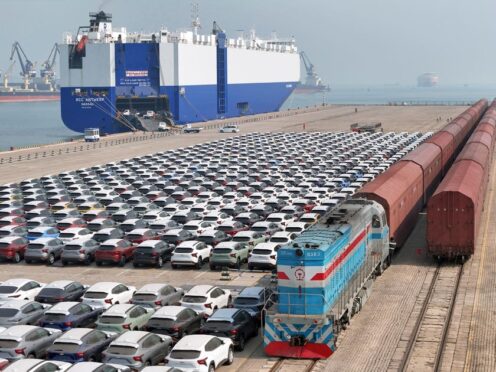China’s exports and imports for the first two months of the year have beaten estimates, an indication that demand may be improving as Beijing attempts to speed up its economic recovery.
Exports in January to February grew 7.1% from a year earlier, according to customs data released on Thursday, up from a 2.3% rise in December. Imports rose 3.5%, compared to 0.2% growth in December. The trade surplus was 125 billion US dollars (£98 billion).
The world’s second-largest economy has struggled to bounce back after the Covid-19 pandemic, as it grapples with weaker demand globally and a slump in its property sector that is weighing on growth.
Although China usually releases trade data monthly, the data for the first two months of the year are combined to avoid distortions from the week-long Lunar New Year holidays, when many businesses and factories are closed.

Demand for Chinese exports has weakened since the Federal Reserve and central banks in Europe and Asia began raising interest rates last year to cool inflation that was at multi-decade highs.
Manufacturing activity in China has also contracted for five consecutive months, according to an official purchasing managers’ index (PMI). The PMI has fallen for much of the past year.
China has set a target of around 5% for economic growth this year, Chinese premier Li Qiang informed delegates at the annual session of the National People’s Congress.
The target is seen as ambitious by economists who say more policy support is required to boost growth.

It is also raising concerns over whether China might seek to push exports sharply higher to support growth. Worries over surging exports of electric vehicles to Europe have raised alarm over whether Chinese-made electric vehicles might crowd out those made by local manufacturers.
The data for January to February show China’s trade in US dollar terms with Europe and Japan falling, while exports to the US rose 5% from a year earlier.
Much of the growth in exports came from trade with China’s Southeast Asian neighbours. Exports to the region rose 4.8% from a year earlier, while imports climbed 6%.
China’s exports of vehicles jumped 22% in January to February in terms of volume and nearly 13% in terms of value, the data show. There was no breakdown by destination or type of vehicle.
